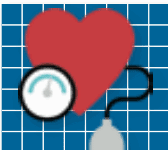You may have heard the terms used interchangeably because the two cardiac arrhythmias are often treated the same way. Also, some patients will have atrial fibrillation and atrial flutter at different times, leading physicians to use the blanket term "fib-flutter" to describe their condition. However, the electrical properties of the two arrhythmias are indeed different. Atrial flutter is a more "organized" rhythm than atrial fibrillation, meaning that its electrical activity is simpler. In atrial flutter, the impulses follow a circular pathway, chasing around the right atrium at rates of 250-350 times per minute. Usually, about half to three-quarters of these signals are blocked, resulting in a pulse rate of 60-175 beats per minute, which can be either regular or irregular. On the surface electrocardiogram (EKG), "flutter waves" sometimes can be detected, but at other times medications or physical maneuvers must be used in order to perceive them.
To continue reading this article or issue you must be a paid subscriber.
Sign in





